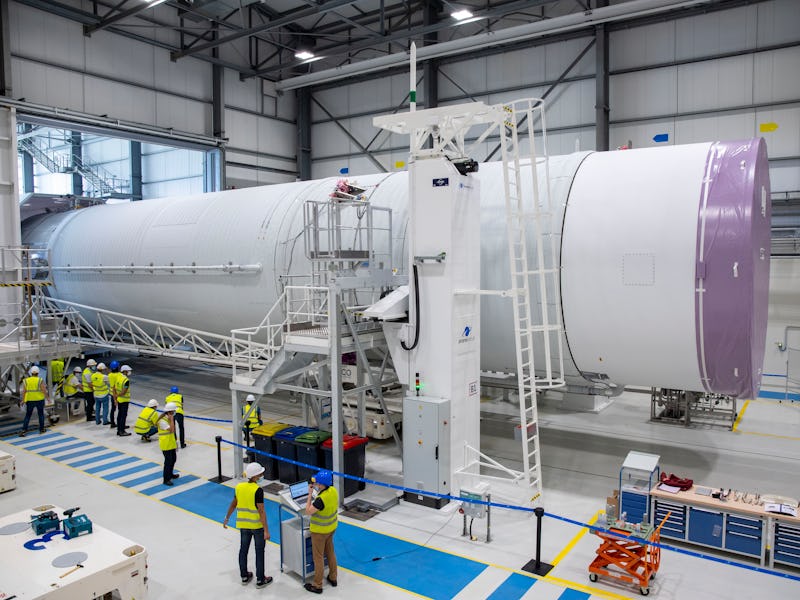Ariane 6: European Space Agency targets launch before end of 2023
The Ariane 6 cometh soon — if it ever takes off.

With yet another delay, it’s unclear when exactly the European Space Agency will blast off its Ariane 6 heavy-lift rocket, the intended successor to the current Ariane 5 rocket that successfully launched the James Webb Space Telescope in December 2021.
Designed as a less costly, more flexible heavy-lift vehicle than the Ariane 5, development of the Ariane 6 began in 2014. Like its predecessor, the new rocket will launch both scientific and commercial payloads from the European Space Port in Kourou, French Guiana, in South America, albeit from an all-new launchpad.
If all goes well, Ariane 6 rockets will begin flying ESA missions such as the HERA spacecraft in 2024, while competing with SpaceX’s Falcon 9 and United Launch Alliance’s Atlas 5 rockets to launch commercial payloads beginning in 2023.
The timing of the Ariane 6 launch is particularly critical for ESA because the Ukraine conflict has prevented the agency from accessing Russia’s rockets. Along with SpaceX launchers, the new vehicle could fill the Soyuz void.
What’s the status of Ariane 6 now?
The first Ariane 6 launch was initially slated for July 2020. After several delays, the rocket is now set to blast off in the “last quarter of 2023,” according to a recent media briefing.
The under-construction Ariane 6 rocket will provide a powerful vehicle for ESA launches.
What is the design of the Ariane 6 rocket?
Ariane 6 will be a two-stage, heavy-lift rocket, rising almost 200 feet off the launch pad.
A Vulcain 2.1 engine, an improved version of the engine powering the Ariane 5, will drive the lower stage, while the new Vinci engine powers the upper stage. Both engines use liquid hydrogen fuel and liquid oxygen oxidizer.
The lower stage also accepts two or four solid rocket boosters to provide additional launch at lift-off, the two-booster configuration known as the A62 variant, and the four-booster configuration the A64 variant of the rocket.
ESA illustration of the two Ariane 6 launch configuration variants.
All told, the Ariane 6 will provide more than 1 million pounds of lift at lift-off and can deliver between 11 and nearly 24 tons to low-Earth orbit, depending on the variant used.
What will the Ariane 6 be capable of?
Between the two variants, rocketing fairings of different sizes, and the flexibility of the Vinci engine — many rocket engines can only be restarted on the ground — Ariane 6 will be able to deliver payloads everywhere from Low-Earth orbit to geosynchronous orbit.
It will also serve well in Earth escape missions, just as its predecessor the Ariane 5 did when launching the Webb telescope out to Lagrangian Point 2, 1 million miles from Earth in deep space.
The James Webb Space Telescope launches aboard an Ariane 5 rocket on December 25, 2021.
What missions might Ariane 6 launch?
With the first flight of the Ariane 6 still uncertain, it’s unclear which payloads the new rocket will loft first and when.
ESA plans to launch a Galileo Navigation satellite sometime in 2023 using the Ariane 6, and its HERA spacecraft, which will examine the results of NASA’s Double Asteroid Redirection Test (DART), sometime in 2024.
This article was originally published on